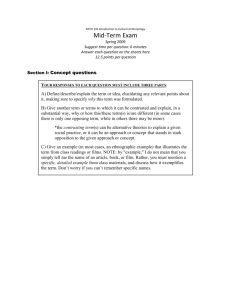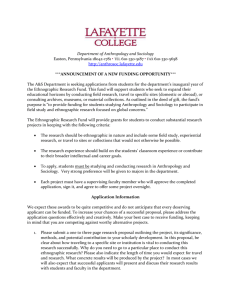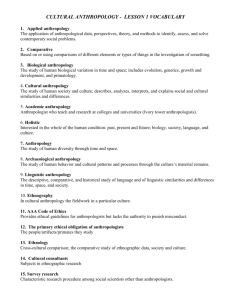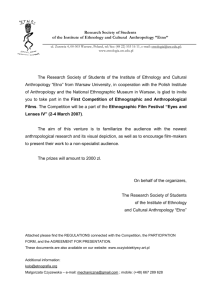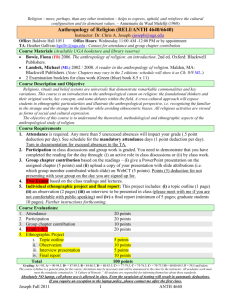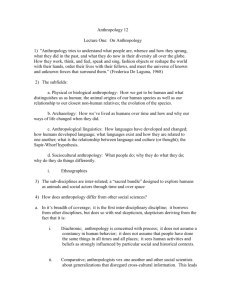Department of Sociology & Anthropology
advertisement
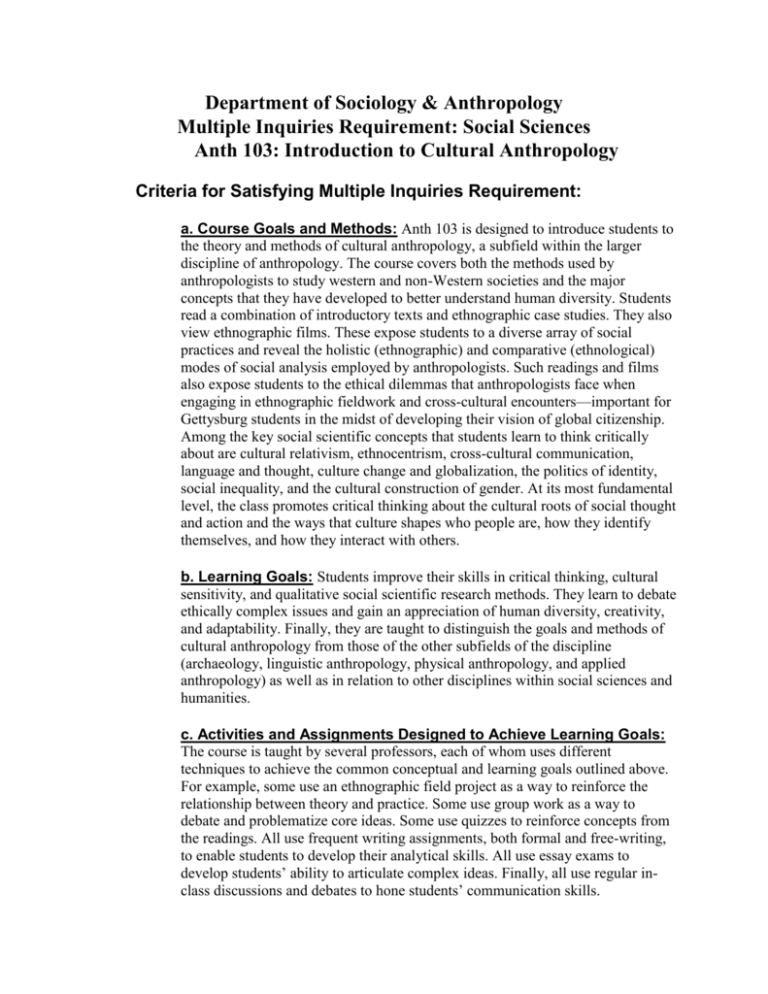
Department of Sociology & Anthropology Multiple Inquiries Requirement: Social Sciences Anth 103: Introduction to Cultural Anthropology Criteria for Satisfying Multiple Inquiries Requirement: a. Course Goals and Methods: Anth 103 is designed to introduce students to the theory and methods of cultural anthropology, a subfield within the larger discipline of anthropology. The course covers both the methods used by anthropologists to study western and non-Western societies and the major concepts that they have developed to better understand human diversity. Students read a combination of introductory texts and ethnographic case studies. They also view ethnographic films. These expose students to a diverse array of social practices and reveal the holistic (ethnographic) and comparative (ethnological) modes of social analysis employed by anthropologists. Such readings and films also expose students to the ethical dilemmas that anthropologists face when engaging in ethnographic fieldwork and cross-cultural encounters—important for Gettysburg students in the midst of developing their vision of global citizenship. Among the key social scientific concepts that students learn to think critically about are cultural relativism, ethnocentrism, cross-cultural communication, language and thought, culture change and globalization, the politics of identity, social inequality, and the cultural construction of gender. At its most fundamental level, the class promotes critical thinking about the cultural roots of social thought and action and the ways that culture shapes who people are, how they identify themselves, and how they interact with others. b. Learning Goals: Students improve their skills in critical thinking, cultural sensitivity, and qualitative social scientific research methods. They learn to debate ethically complex issues and gain an appreciation of human diversity, creativity, and adaptability. Finally, they are taught to distinguish the goals and methods of cultural anthropology from those of the other subfields of the discipline (archaeology, linguistic anthropology, physical anthropology, and applied anthropology) as well as in relation to other disciplines within social sciences and humanities. c. Activities and Assignments Designed to Achieve Learning Goals: The course is taught by several professors, each of whom uses different techniques to achieve the common conceptual and learning goals outlined above. For example, some use an ethnographic field project as a way to reinforce the relationship between theory and practice. Some use group work as a way to debate and problematize core ideas. Some use quizzes to reinforce concepts from the readings. All use frequent writing assignments, both formal and free-writing, to enable students to develop their analytical skills. All use essay exams to develop students’ ability to articulate complex ideas. Finally, all use regular inclass discussions and debates to hone students’ communication skills.
